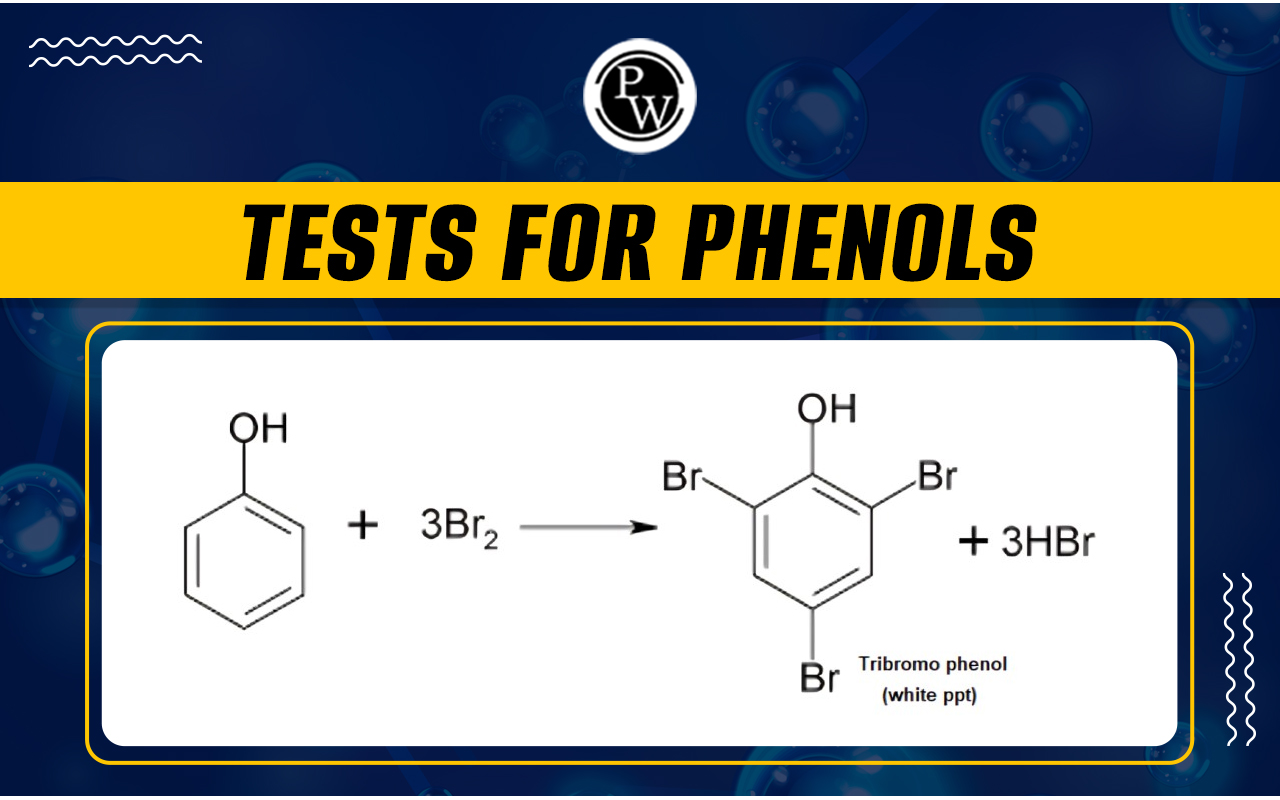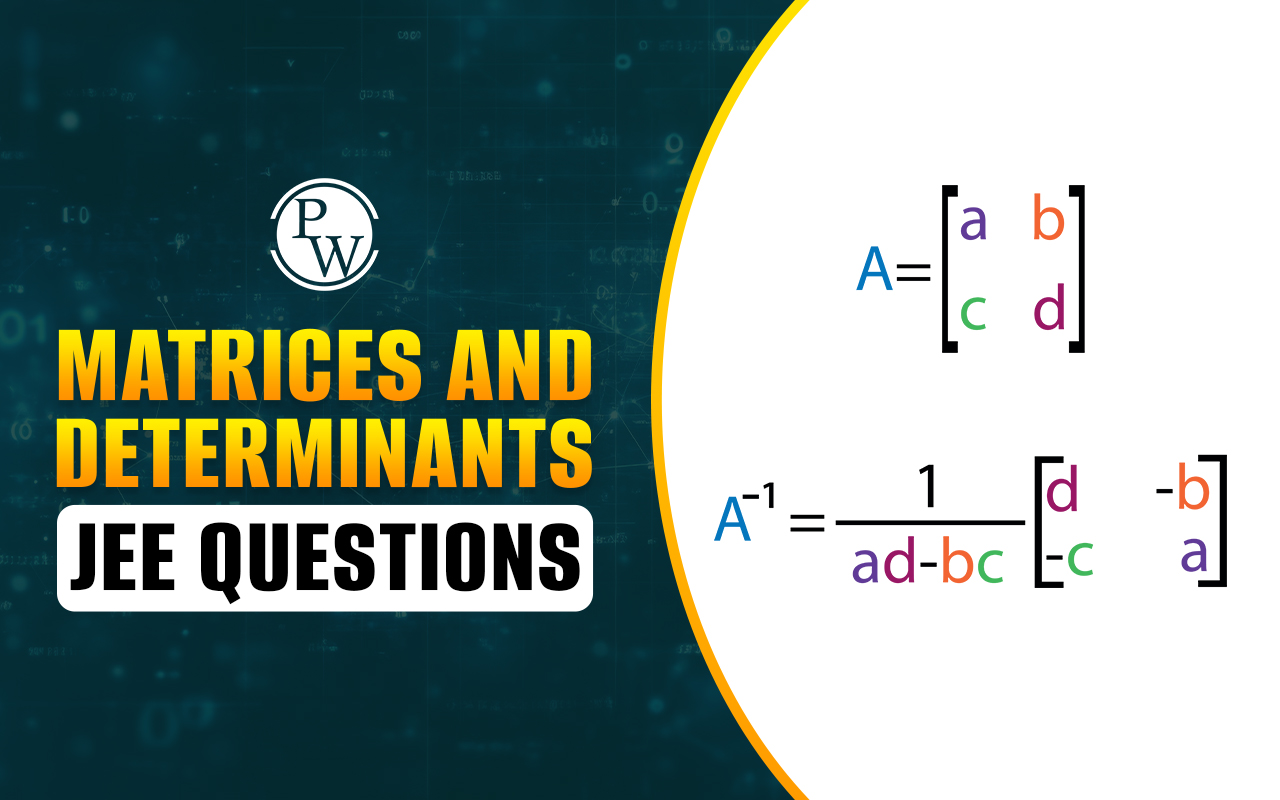
Tests For Phenols : Organic compounds with a hydroxyl (—OH) group bonded to a carbon atom in a benzene ring are known as phenols. Because they cannot participate in the same oxidation reactions as alcohols, their chemical behavior differs greatly from alcohols'. Furthermore, because the phenoxide anion produced by the loss of the hydroxyl proton is resonance-stabilized, phenols are weak acids as opposed to alcohols.
Test for Phenols
Test for Phenols: To find the phenolic functional group, perform any of the following tests.
- Litmus test
- Ferric chloride test
- Libermann’s test
- Bromine water test
- Phthalein dye test
Litmus Test
Litmus Test: To determine if a solution is acidic or basic, scientists use litmus paper. In the presence of a base, blue litmus paper stays blue and red litmus paper turns blue. Phenol causes red litmus paper to turn blue. This demonstrates that phenol is naturally acidic. A test for carboxylic acid is also provided. In contrast to carboxylic acid, phenol exhibits a weak acidity and lacks effervescence when combined with aqueous sodium carbonate.
Procedure
-
Put a tiny crystal or a drop of the provided organic solution on some wet blue litmus paper.
-
Look for a color change; if it turns red, there might be a phenolic group present.
Observations And Result
Observations and Result: Phenol turns blue litmus paper red. It confirms phenol is present.
Ferric Chloride Test : When freshly prepared ferric chloride solution is combined with phenol aqueous solution, a colored complex is produced. Solutions containing most phenols are dark in color.
The following is the chemical reaction.
6C 6 H 5 OH + FeCl 3 → [Fe(C 6 H 5 O)] 3– (violet colour complex) + 3HCl + 3H +
Ferric Chloride test (Violet colour)
Ferric Chloride test (Violet colour): -
Procedure :
- Put the provided organic compounds in water to dissolve them.
- Slowly add ferric chloride in a neutral solution dropwise.
- Observe how the color changed.
- The color of the substance is red, blue, green, or purple when phenol is present
Observations and Result: red, blue, green, or purple colouration shows the presence of phenol.
Libermann’s Test: When concentrated sulfuric acid and sodium nitrite are combined with phenol, a yellow quinone monoxime complex is created. An abundance of sulfuric acid and phenol results in the formation of a deep blue indophenol complex. Indophenol is first diluted to produce a red color, which is then transformed into a deep blue sodium salt solution of indophenol by applying sodium hydroxide. Phenols, which have a free para position, give this test.
Procedure:
- Put the sodium nitrite crystals in a dry, clean test tube.
- To the sodium nitrite solution, add 1 milliliter of phenol.
- After gently heating the mixture, let it cool.
- Shake the contents after adding 1 milliliter of concentrated sulfuric acid.
- Keep an eye on the solution's color change.
- If a phenolic group is present, dilute the solution with water until the given compound turns red.
- Add the sodium hydroxide solution now, and the solution turns blue or green.
Observations and Result: Deep blue color solution shows the presence of phenol.
Bromine Water Test
Bromine Water Test: Using bromine, phenol goes through an electrophilic substitution process. A white precipitate of tribromophenol is produced when bromine water is added to an aqueous phenol solution, removing the brown hue of the bromine. The following is the chemical reaction.
Procedure:
-
The provided organic compound should be dissolved in glacial acetic acid.
-
Drop by drop, add the bromine water solution to this.
-
Phenol is present if the bromine color fades.
Observations and Result: The presence of phenol is indicated by the formation of white precipitate
Phthalein Dye Test
Phthalein Dye Test: When phenol is heated with phthalic anhydride and concentrated sulfuric acid, phenolphthalein, a colorless condensation compound, is formed. A second reaction with a diluted sodium hydroxide solution produces fluorescein, a pink-colored fluorescent compound. Different phenolic compounds, which can be seen against a white background, produce characteristic colors.
The following is a chemical reaction :
Phthalein Dye Test
Procedure:
-
Place the organic substance under testing in a test tube.
-
Transfer in 200 mg of phthalic anhydride.
-
Drops of sulfuric acid concentrate should be added to the mixture.
-
For two to three minutes, heat the mixture.
-
Once the mixture has cooled, transfer it to a beaker filled with a diluted solution of sodium hydroxide.
-
Use an equal amount of water to dilute the entire mixture.
-
Study how the color of a white background changes.
-
View the fluorescence color against a black background if it is present.
Observations and Result: The presence of phenol is indicated by the pink solution.
Tests For Phenols FAQs
Q.1 : Which reagent is used in Phthalein dye test?
Q. 2 : What is a Litmus Test?
Q.3 : Which intermediate compound is formed in the phthalein dye test?













